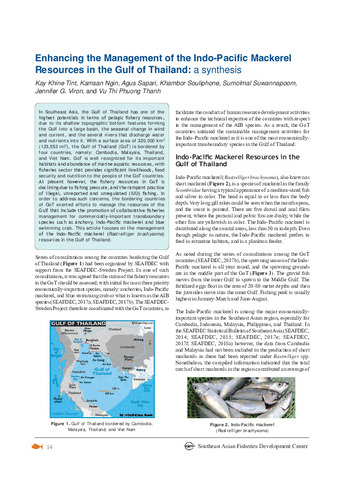Enhancing the Management of the Indo-Pacific Mackerel Resources in the Gulf of Thailand: a synthesis
Share
นามธรรม
In Southeast Asia, the Gulf of Thailand has one of the highest potentials in terms of pelagic fishery resources, due to its shallow topographic bottom features forming the Gulf into a large basin, the seasonal change in wind and current, and the several rivers that discharge water and nutrients into it. With a surface area of 320,000 km2 (123,553 mi2), the Gulf of Thailand (GoT) is bordered by four countries, namely: Cambodia, Malaysia, Thailand, and Viet Nam. GoT is well recognized for its important habitats and abundance of marine aquatic resources, with fisheries sector that provides significant livelihoods, food security and nutrition to the people of the GoT countries. At present however, the fishery resources in GoT is declining due to fishing pressure, and the rampant practice of illegal, unreported and unregulated (IUU) fishing. In order to address such concerns, the bordering countries of GoT exerted efforts to manage the resources of the Gulf that include the promotion of collaborative fisheries management for commercially-important transboundary species such as anchovy, Indo-Pacific mackerel and blue swimming crab. This article focuses on the management of the Indo-Pacific mackerel (Rastrelliger brachysoma) resources in the Gulf of Thailand.

